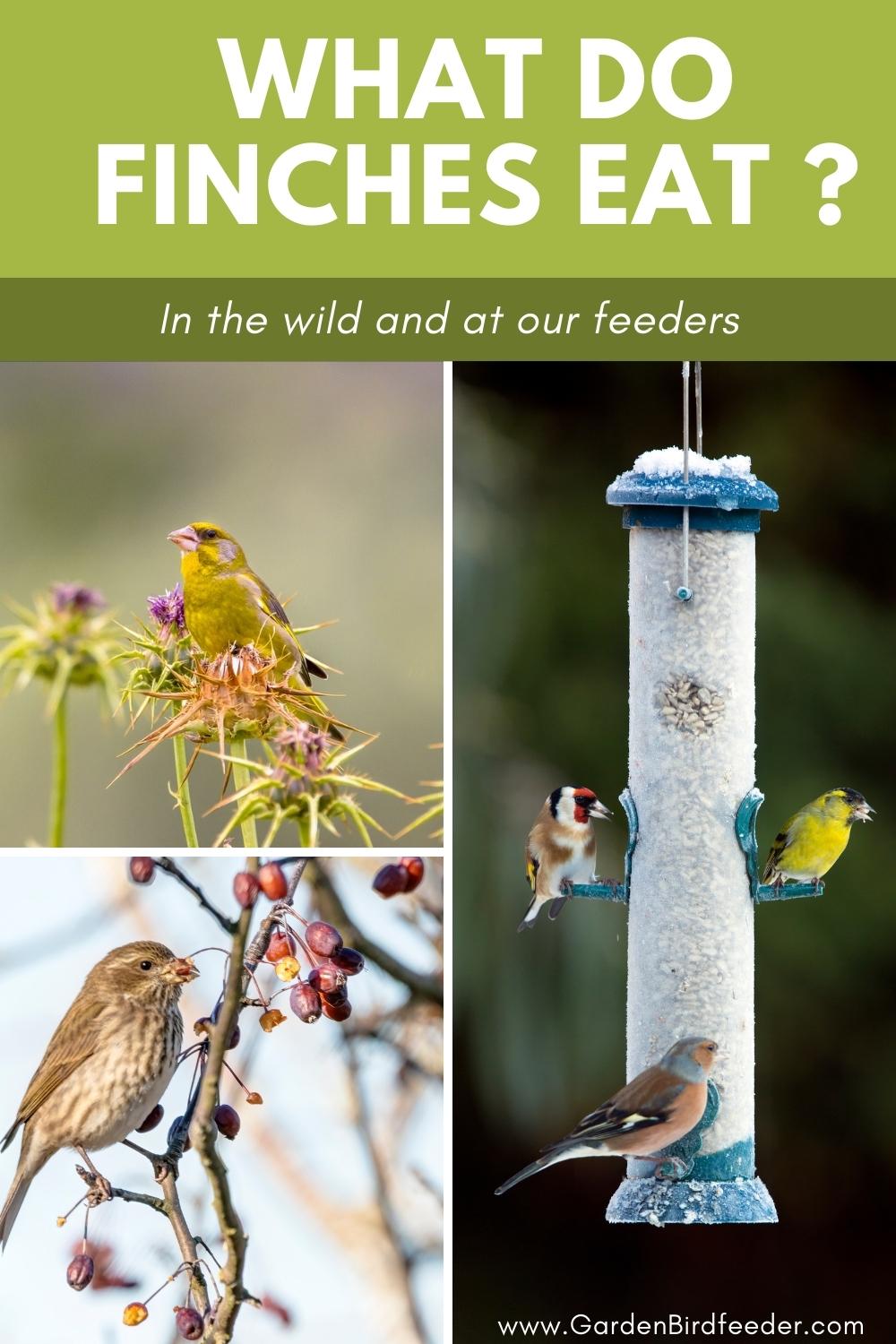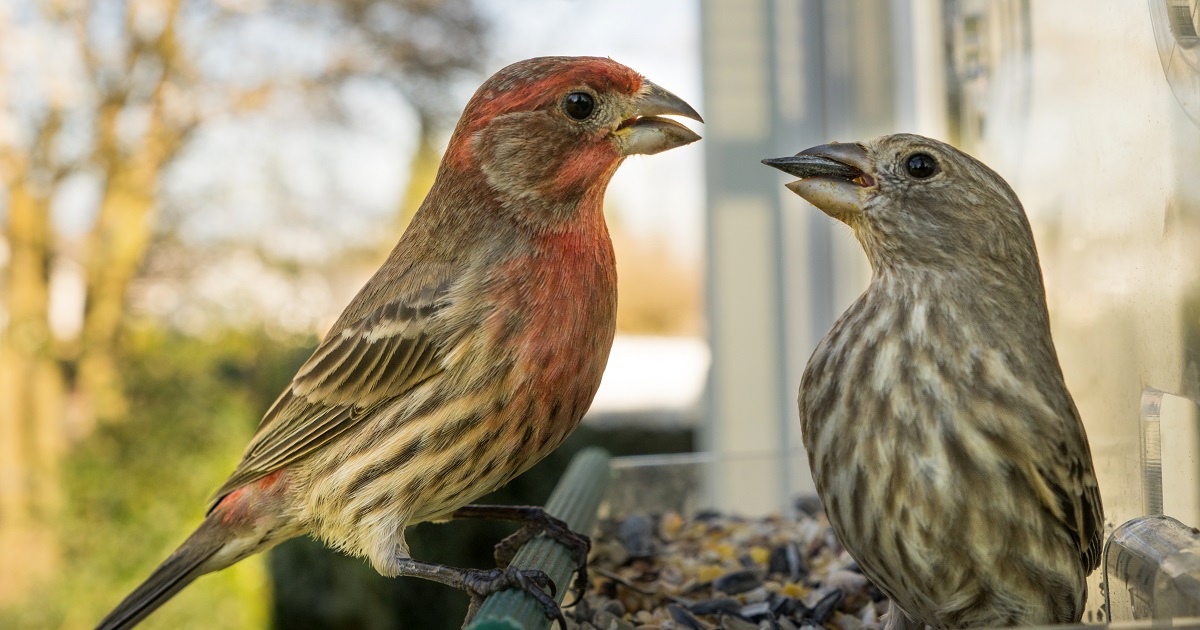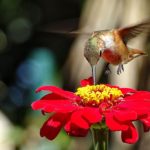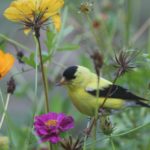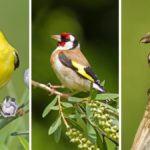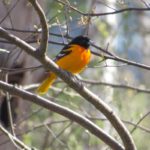What do finches eat? When do they forage and what do they feed their young? Learn all about the common finch diet.
Finches are small and stout birds, with most not growing longer than 10” in length. But despite their small size, these birds have a massive appetite. Like many other wild birds, they can eat half of their body weight in food each day.
With their conical bills, finches can easily crack open seeds. These birds are omnivorous and have a varied diet.
What Do Finches Eat?
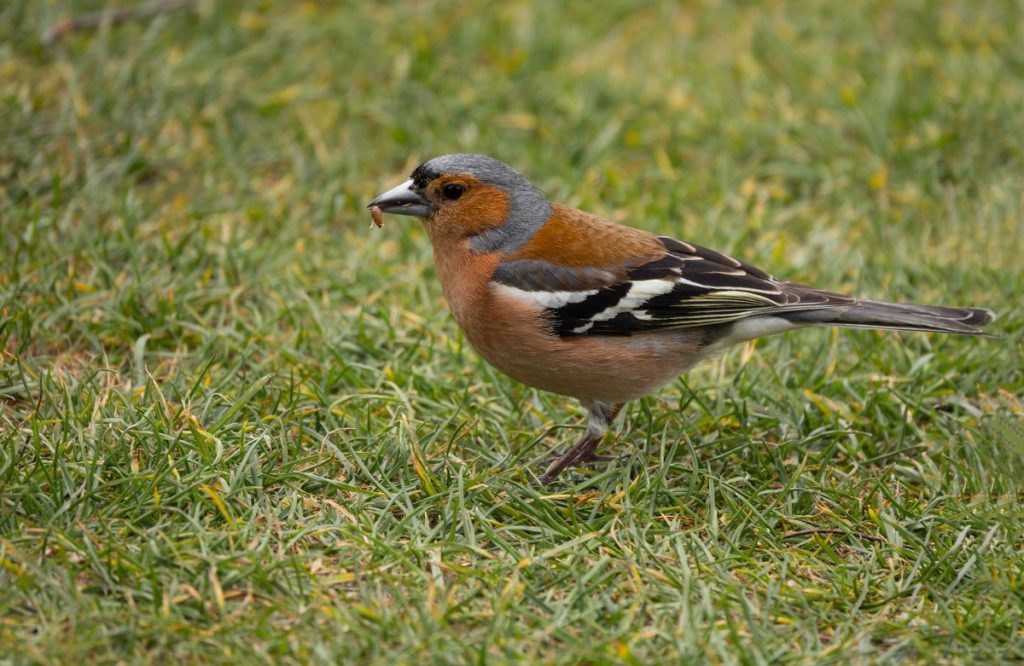
Like many other birds, the finch’s diet consists mainly of seeds. Their diets change as the seasons change, and they eat more than just seeds. Different types of finches have slightly different diet preferences.
What Types of Seeds Do Finches Eat?
Seeds make up a large part of the finch’s diet. They can eat a variety of seeds, including:
- Nyjer (a thin, black seed from the African yellow daisy)
- Sunflower
- Flax
- Grass
- Thistle
The purple finch also enjoys dining on tree seeds, including:
- Elm
- Maple
- Tulip
The finch’s bill is designed for cracking opening and eating seeds, so it’s not surprising that they make up the majority of their diets.
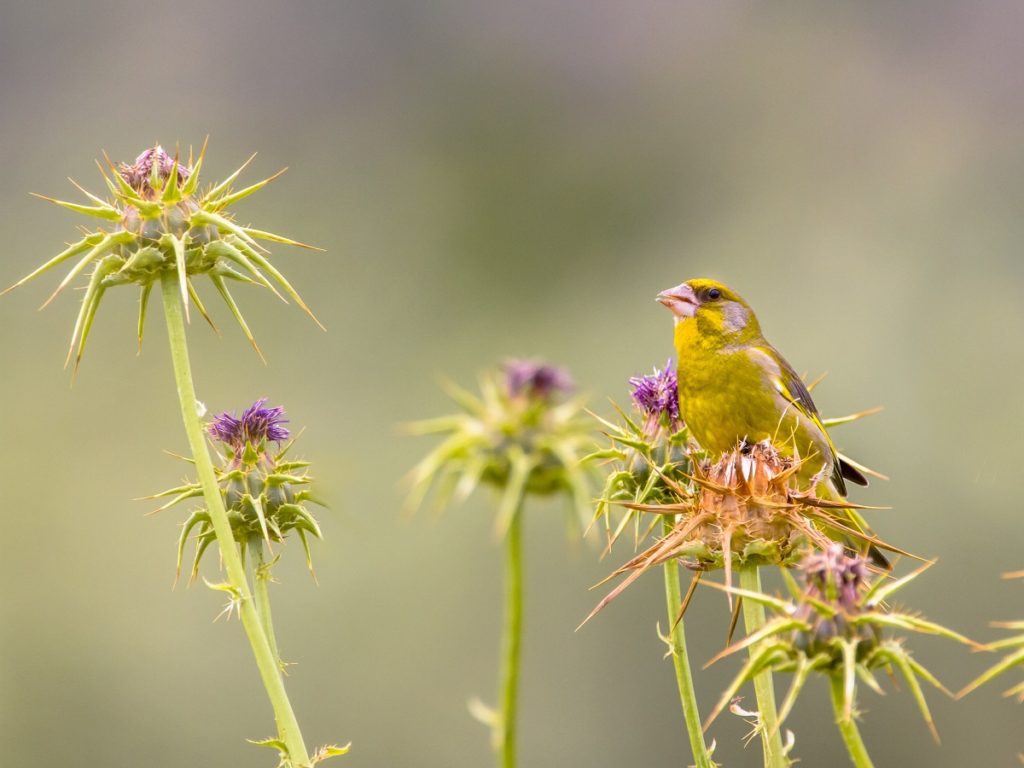
What Else Do Finches Eat?
While seeds make up a large percentage of a finch’s diet, they also eat other things. As the seasons change, their diet preferences will also change. Many finches will eat organic fruits and vegetables as well as insects and, of course, grains.
Grains
Grains are a favorite treat of finches, and they’ll eat a variety of different types, including:
- Millet
- Barley
- Oats
- Corn
- Buckwheat
- Rice
- Quinoa
Finches love to dine on grains because they provide vital nutrients. They’re especially fond of sprouted grains.
Birdwatchers who want to attract finches to their backyards may consider offering sprouted grains from time to time. It’s crucial to take special care when sprouting grains, as they can easily become a breeding ground for fungi and bacteria.
Berries and Fruit
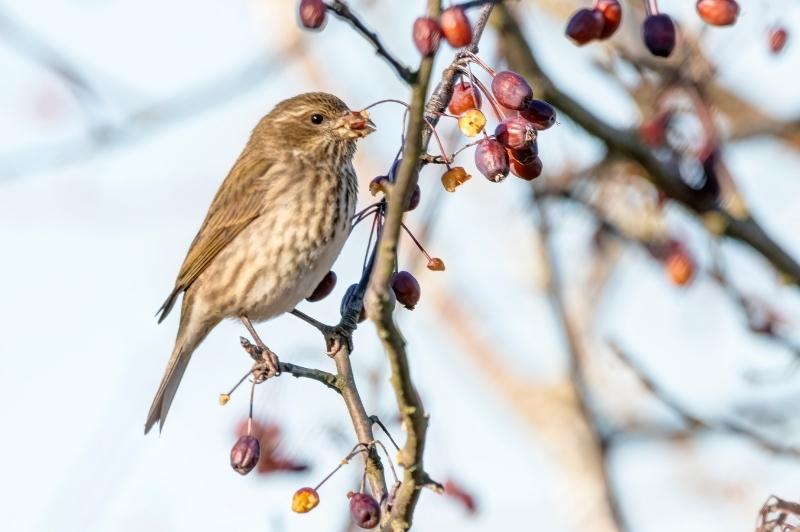
While they prefer grains and seeds, finches will also eat fruit and berries, such as:
- Apples
- Cherries
- Peaches
- Pears
- Nectarines
- Watermelons
- Mangoes
- Blueberries
- Blackberries
- Raspberries
- Cranberries
- Strawberries
Berries and fruits are healthy and nutritious for finches and many other birds. Some types of finches are particularly fond of cherries, but most are happy to eat a variety of fruits and berries.
Leaves
When foraging for food, finches may seek out leaves or greens. They’ll dine on lettuce, dandelion, spinach, nasturtium, parsley, chickweed, fennel bulb, celery, and other greens.
Greens provide finches with important nutrients, like potassium, fiber, iron, magnesium, carbohydrates, and more. In addition, they’re readily available and easily accessible, making them a quick and easy food source when grains and seeds aren’t nearby.
Vegetables
Finches may also eat vegetables. They prefer tomatoes, zucchini, carrots, cabbage, broccoli, green beans, peas, and sweet potatoes.
Like greens, these vegetables provide vital nutrients.
Birdwatchers with vegetable gardens may need to take extra steps to protect their plants from foraging finches. While they may damage vegetable gardens to some extent, they can also be beneficial by dining on common pests.
Insects
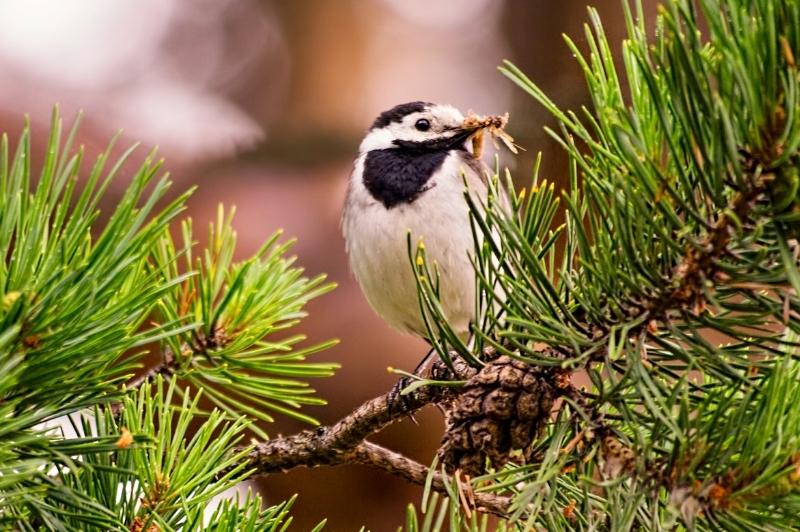
Although not as common as seeds and grains, some finches do eat insects. In the wild, Owl finches, Waxbill finches, and Lady Gouldian finches have been observed foraging for insects.
Some types of finches have to forage for insects when feeding their young or during the breeding season.
What types of insects do finches eat?
- Termites
- Wasps
- Crickets
- Mealworms
- Silkworms
- Ants
- White worms
- Wax worms
House finches and goldfinches especially like aphids, caterpillars, and beetles. House finches will also eat worms in the spring when they’re most abundant.
Tree Buds
Like many other birds, finches will also eat tree buds. Buds provide finches with vital nutrition early in the spring season when seeds may not be available.
Fortunately, finches generally won’t eat enough buds to damage plants.
Attracting Finches to Birdfeeders
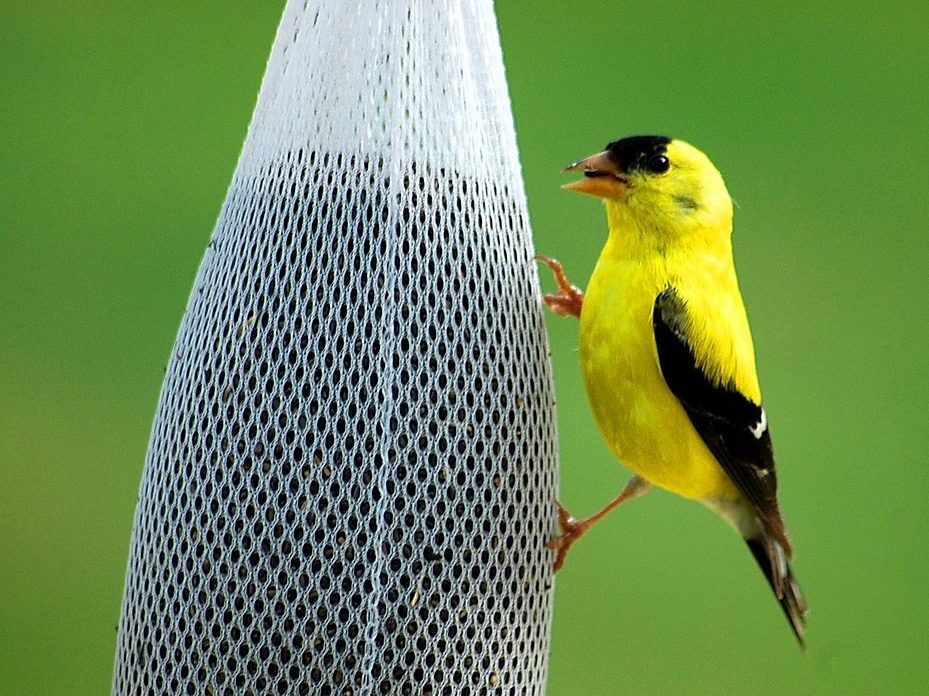
Seeds and grains are ideal for birdfeeders if the goal is to attract finches. Nyjer seeds are especially attractive to finches.
It’s important to keep feeders clean and dry. Finches will only visit if seeds and grains are free of mold and other contaminants.
What Do Finches Eat in the Winter?
Many types of finches are non-migratory, which means they stay put all year-round. During this cold season, finches also eat seeds and grains in the winter. They enjoy Nyjer seeds, hulled sunflower seeds, black oil sunflower seeds, and millet year-round. They will also eat insects, fruits, and vegetables during this time.
Wild finches may visit seed-bearing flowers during the cold months.
When seeds and grains are not available, they change their diets to berries, fruits, greens, and vegetables. Finches are adaptable birds, and they can be opportunistic.
What Do Baby Finches Eat?
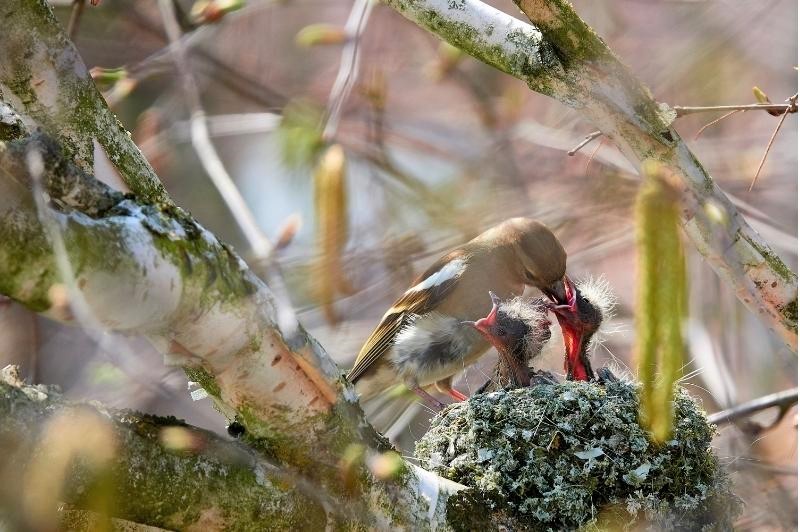
Wild baby finches must consume a certain diet and eat several times throughout the day to grow healthy and strong. They dine on whatever their mothers feed them, which is either grains and seeds or insects.
When baby finches first hatch, it’s the father’s job to feed the mother because she cannot leave her babies alone. Moms regurgitate their food to feed their chicks.
American goldfinches and Brambling finches feed their babies insects, like gnats and aphids. Others will feed their young a mix of seeds and grains.
Once a baby finch becomes a fledgling, it’s fed by both its mother and father until they are old enough to leave the nest.
When the chicks are old enough to leave the nest, the father continues to feed the young. The mother, meanwhile, ventures out to find a new mate for her next brood.
Once they are old enough to be on their own, finches will begin foraging for food on their own.
Finches can start nesting as early as March, and they may produce two or more broods in any given year. Each brood can consist of four or five young, so finch parents have their work cut out foraging for food.
Where Do Finches Forage?
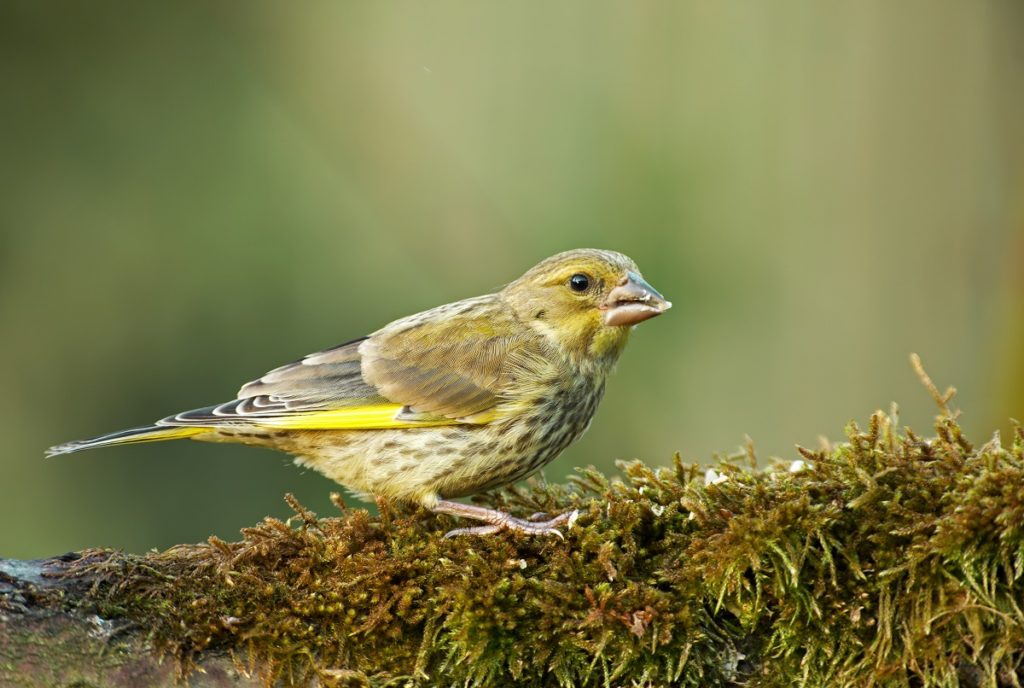
Finches forage for food in a few different ways. When they’re looking for seeds and grains, they’ll hop along the ground to seek them out. They may also forage for food up in the trees, and can sometimes be found foraging upside down to reach conifer seeds.
In urban and suburban areas, finches can be found looking for food in open, grassy spaces.
When eating, finches chew on seeds to open up the husks and then use their tongues to remove the kernels. Typically, finches forage in flocks, sometimes as large as 50. They can be noisy when foraging, too.
What Time of the Day Do Finches Forage?
Finches are considered diurnal, so they forage for food throughout the day. They use a combination of their eyesight and olfactory senses to seek out food.
Do Finches Visit Bird Feeders?
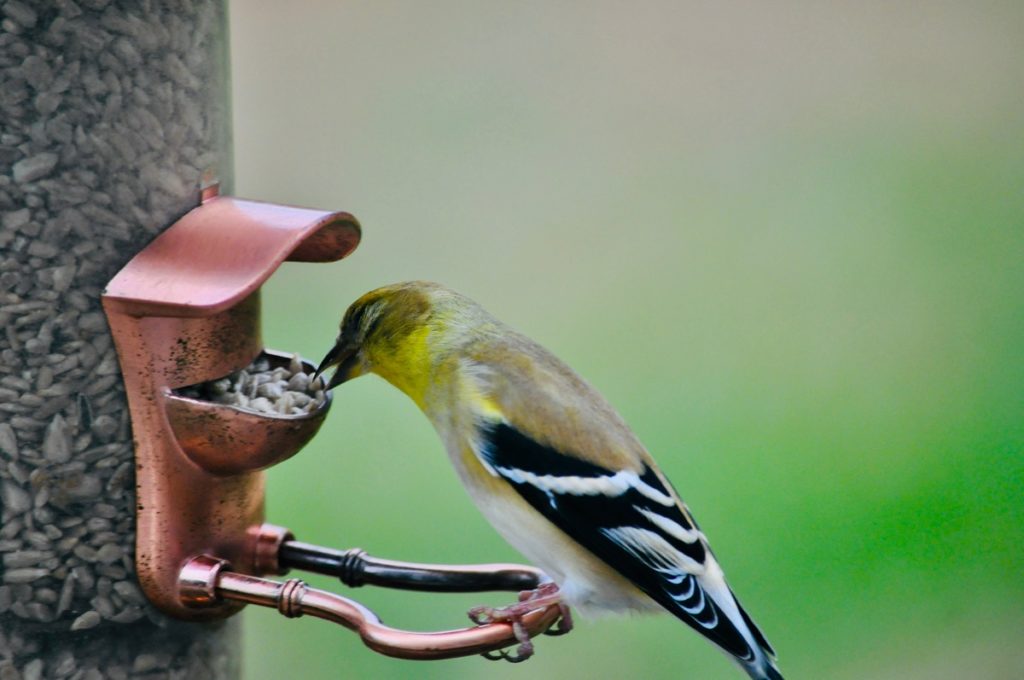
Yes, finches will absolutely visit bird feeders. They’ll visit any time of the year, but they’ll be especially attracted to feeders when wild food sources are scarce. These acrobatic birds will also visit upside-down feeders and happily eat from this position.
Summary
When it comes to food, finches prefer seeds and grains. But they won’t shy away from fruit, berries, greens, and vegetables either. Many types will eat insects, especially during mating season and when feeding their young.
Nyjer seeds are the gold standard for bird feeders if the goal is to attract finches, but seed mixes are available and specifically formulated for attracting finches. See our list of favorite finch feeders that are designed to hold the types of seed they enjoy.
Like It? Pin It
